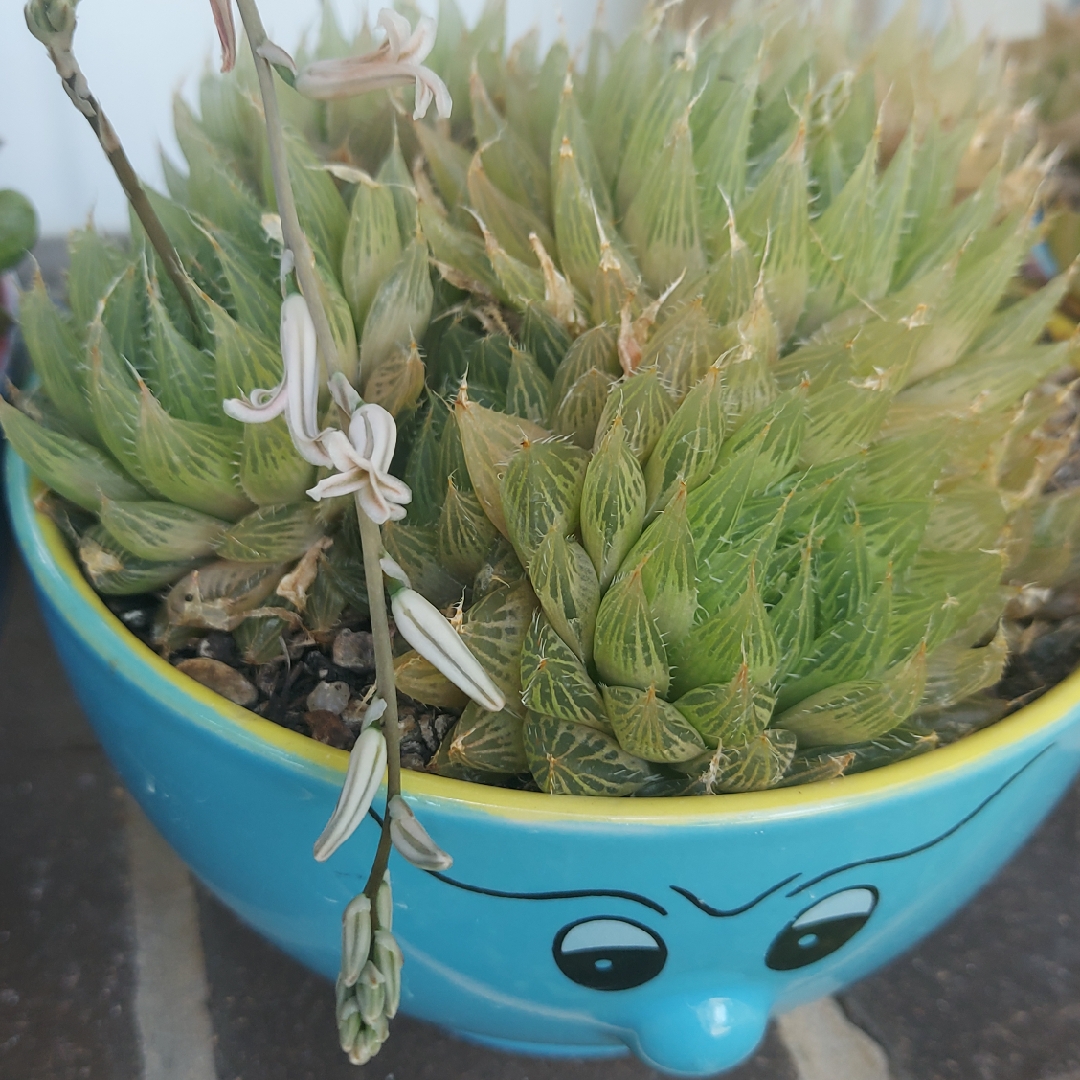
Haworthia cooperi var. leightonii
Haworthia 'Cooperi var. Leightonii'
Original:Original:(G.G.Sm.) M.B.Bayer: has reddish longitudinal lines towards the end of the leaf. This variety often appears in nurserymen's lists as leightoniae. New:Gasterias are recognisable from their thick, hard, succulent "tongue-shaped" leaves. Gasteria are grown in well-drained, sandy soils in light shade. They can be propagated by off-sets and cuttings. They are also commonly propagated by seed. Germination usually occurs within 8 days but may take as long as one month, depending on the species. New:Haworthia generally resemble miniature aloes, except in their flowers. They are popular garden and container plants. The plants can grow solitary or can be clump-forming. Their flowers are small, white and very similar between species. But their leaves show wide variations.
-
Partial shade
-
Very little water
-
Frost Hardy: 23F (-5°C)
-
Free draining
Common name
Haworthia 'Cooperi var. Leightonii'
Latin name
Haworthia cooperi var. leightonii
type
Succulent
family
Asphodelaceae
ph
5.0 - 7.0 Acid - Neutral
Plant & bloom calendar
-
Best time to plant
-
When the plant will bloom
full grown dimensions
 0.30 M
0.20 M
0.30 M
0.20 M
Haworthia cooperi var. leightonii
Original:Original:(G.G.Sm.) M.B.Bayer: has reddish longitudinal lines towards the end of the leaf. This variety often appears in nurserymen's lists as leightoniae. New:Gasterias are recognisable from their thick, hard, succulent "tongue-shaped" leaves. Gasteria are grown in well-drained, sandy soils in light shade. They can be propagated by off-sets and cuttings. They are also commonly propagated by seed. Germination usually occurs within 8 days but may take as long as one month, depending on the species. New:Haworthia generally resemble miniature aloes, except in their flowers. They are popular garden and container plants. The plants can grow solitary or can be clump-forming. Their flowers are small, white and very similar between species. But their leaves show wide variations.
Flowering Season
From Mid Summer TO Mid Summer
Haworthia and Haworthiopsis will produce flowers, usually a few weeks after the "longest day" of the year, i.e. in Summer. However the flowers aren't very exciting, although because Haworthia and Haworthiopsis are very slow and compact plant not much happens visually during the year therefore the flowering period can be a welcome treat to show that your plant is actually "alive".
Planting Young Plants
From Early Spring TO Early Spring
When you re-pot your Haworthia or Haworthiopsis you can separate the offsets from the parent. Use a sharp knife and cut as close to the parent plant as possible, ensure the offset has some roots. Wait a day for the offset to dry slightly then pot up in a small container using a standard potting or cactus compost mix. Water and keep warm.















